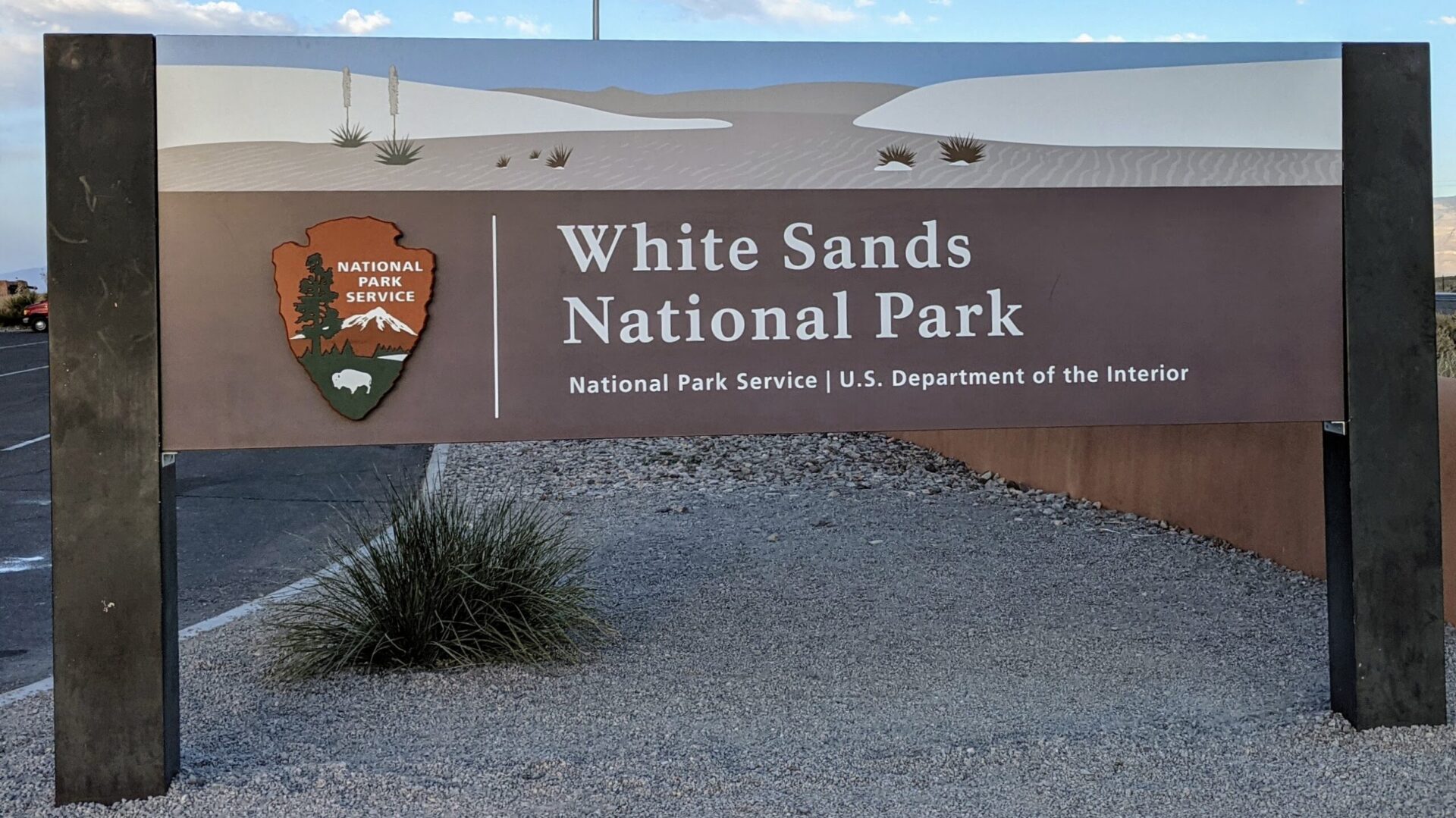We stopped in Alamogordo, New Mexico, for a week in part to split up our drive from Terlingua, Texas (home to Big Bend National Park), and Tucson, Arizona. The other reason was to squeeze in a visit to White Sands National Park. If you’re going to stop somewhere for a week, why not have a destination to visit, right?

Designated as a national monument in 1933, White Sands was upgraded to National Park status in 2019. It’s small compared to some of the other parks that we’ve visited, including Big Bend National Park, five and a half times bigger. Still, with 146,331 acres, the park is the size of Saint Lucia island in the eastern Caribbean.
Located within the Chihuahuan desert, White Sands National Park covers over half of the total 275 square miles of the world’s largest gypsum dune field.

In some ways, this is the desert that I expected last year when I had my first desert experience. Much of the park is barren of plant life and is sand in all directions for miles and miles.
In places where the dune has moved, there are lots of shallow-rooted plants. Despite the arid climate, the gypsum remains moist during the most extended periods of drought. Moisture prevents the dunes from blowing away and makes the land accessible for climbing.

Five thingsyou should know before visiting White Sands National Park:
- Dogs are allowed! White Sands is one of the only national parks where dogs are allowed in most places. And your furbabies are likely to love it as much as our dog, Skipper, did! Just be sure to have them on a leash, and please pick up after your dog!
- If you want to try sledding in the sand, this is the place to do it. We saw loads of people trying to sled down the dunes.
- Pack lots of water! You’ll grow thirsty fast as you climb up and down the dunes and walk around the area. (Be sure to pack plenty of water for your pets too!)
- Consider wearing old shoes. You’ll never get all of the sand out of your shoes after you’ve been here!
- Be sure to check the missile range launch schedule! Most of the park closes during missile launches, and so does the road outside of the park. You can find out about these at www.nps.gov.

In total, we spent about three or four hours in the park. We drove the eight-mile Dunes Drive out to the end, where we climbed dunes and walked around, taking in the beauty of the sand for miles in all directions. On our way back, we stopped to walk the Dune Life Nature Trail. Here, we enjoyed the dunes’ beauty, the plant life, and reading the interpretive signs along the trail.

We felt like we got a chance to experience the park, although I would love to return again to watch the sunset or the monthly full moon hike. Be sure to check the park’s website to find out more details!




